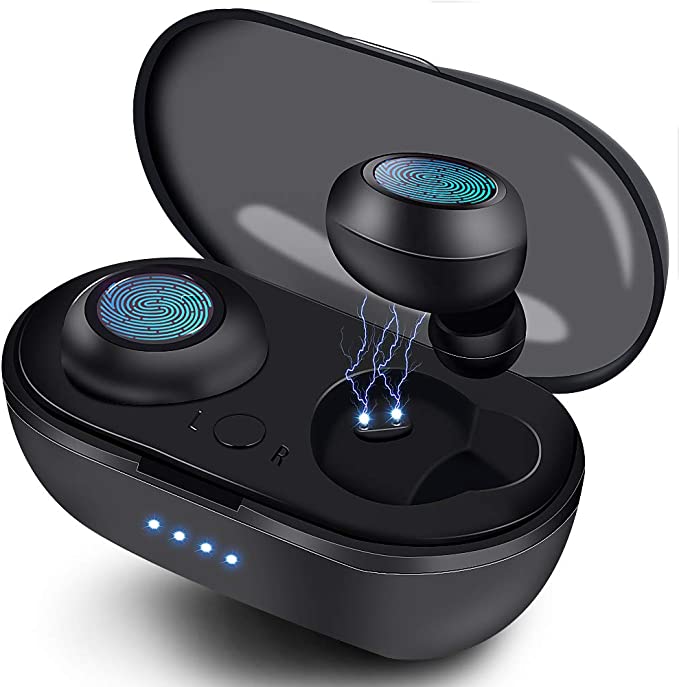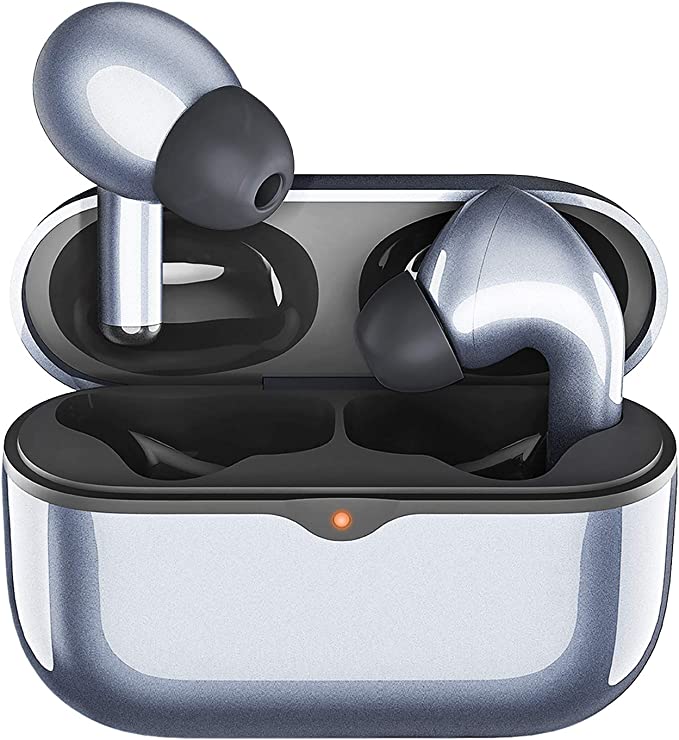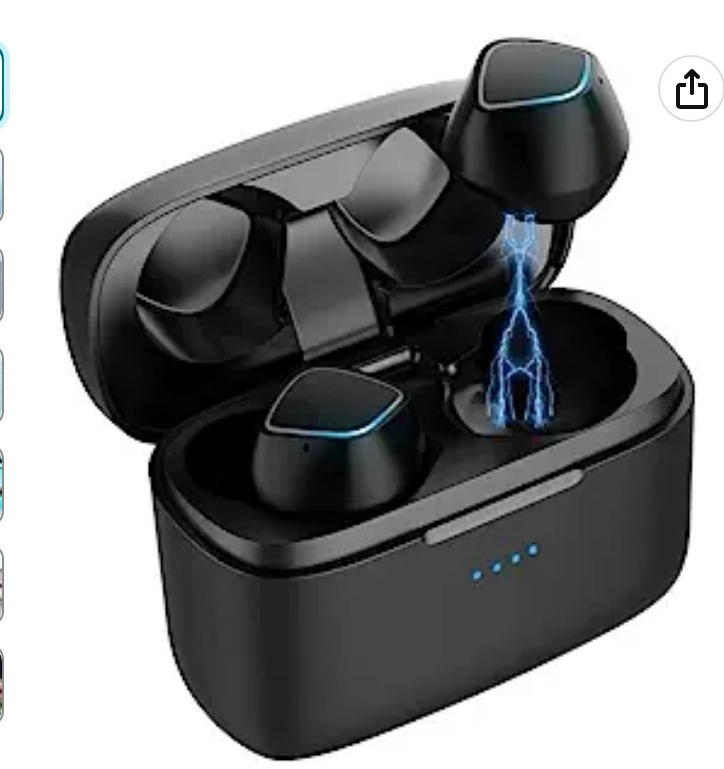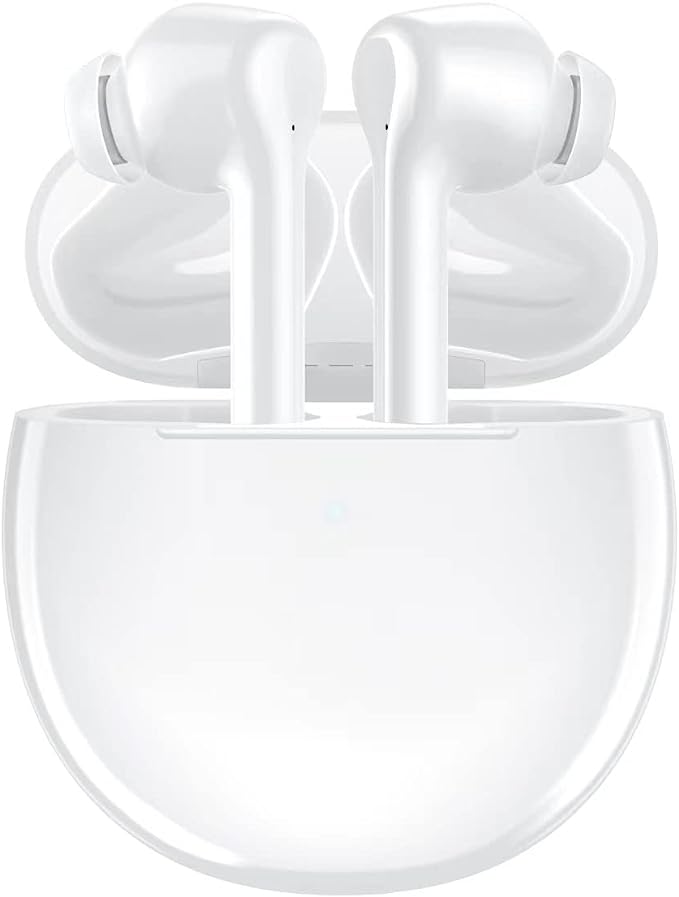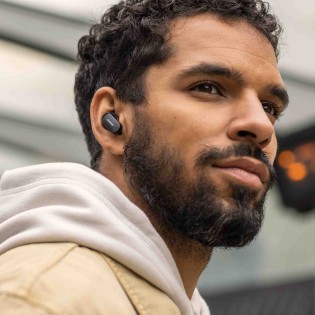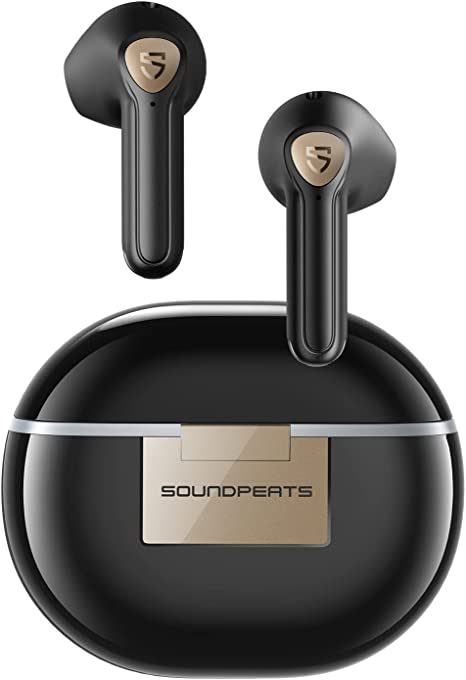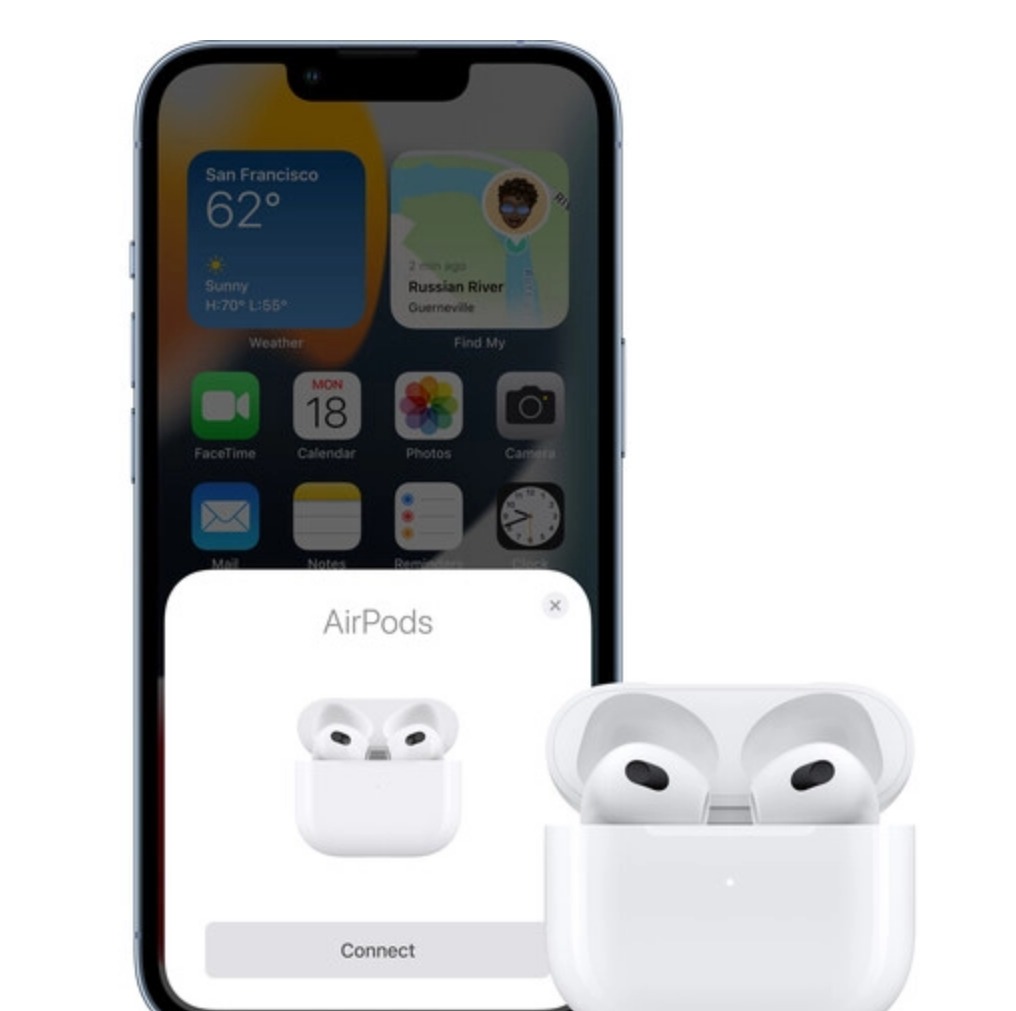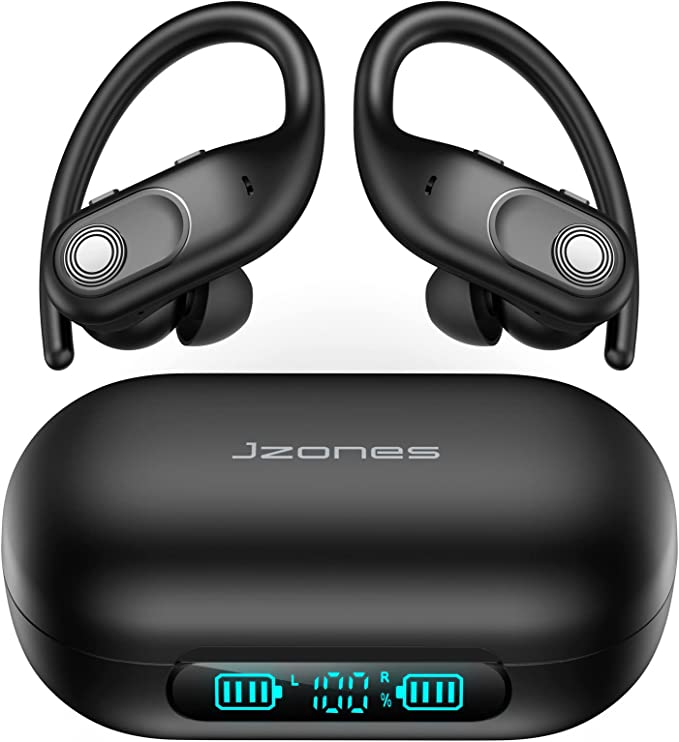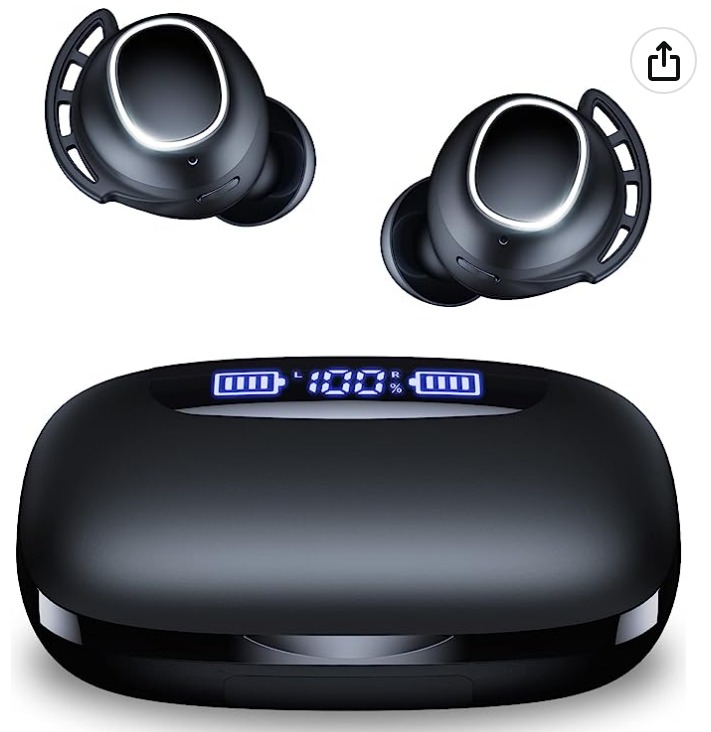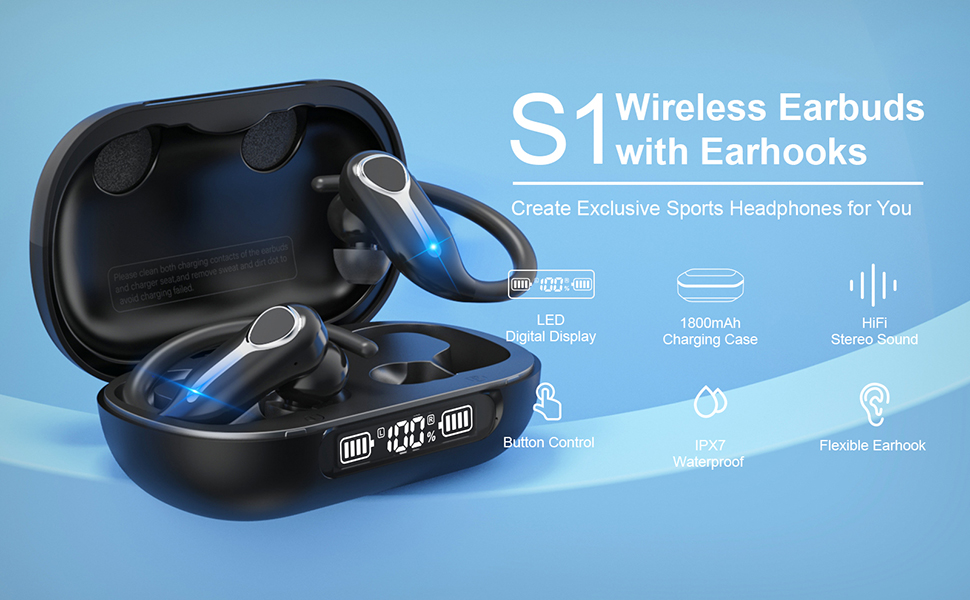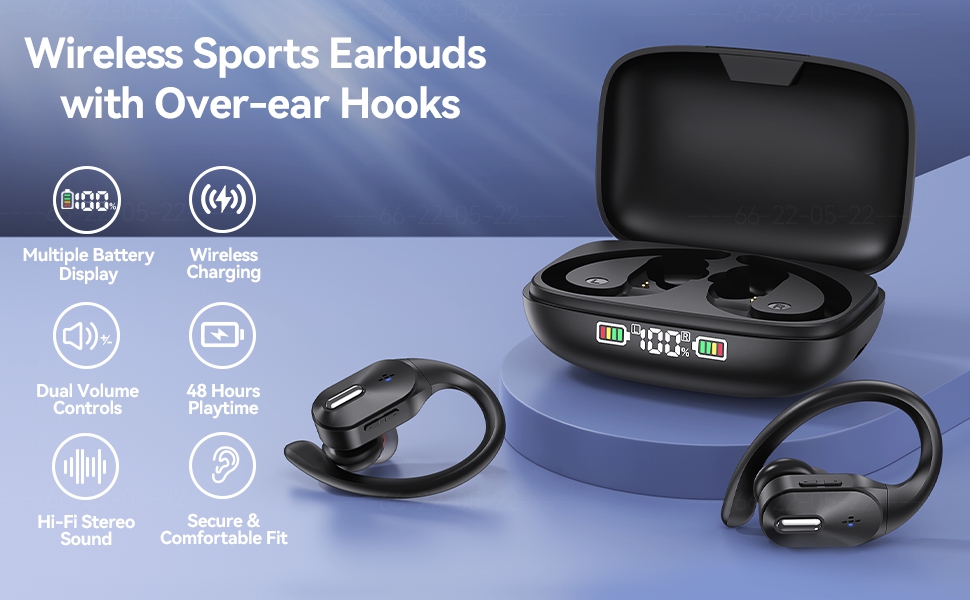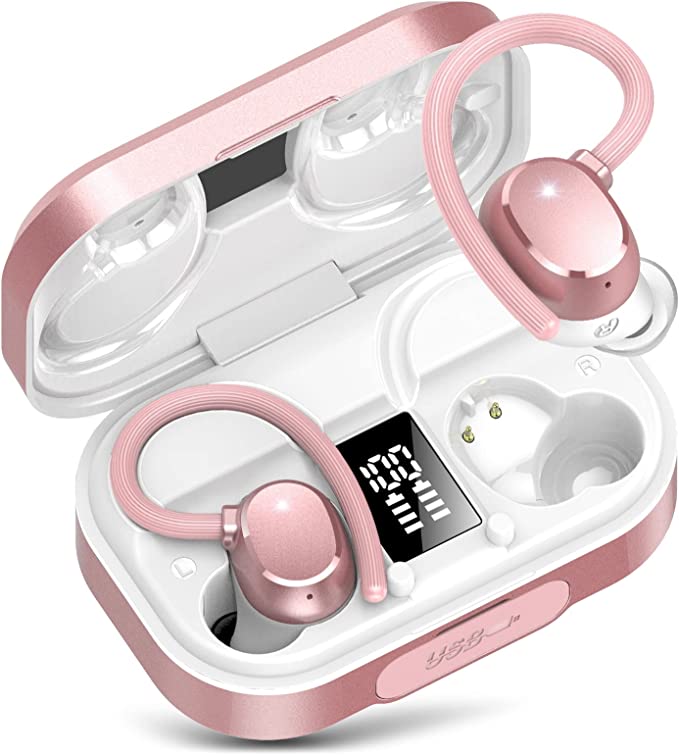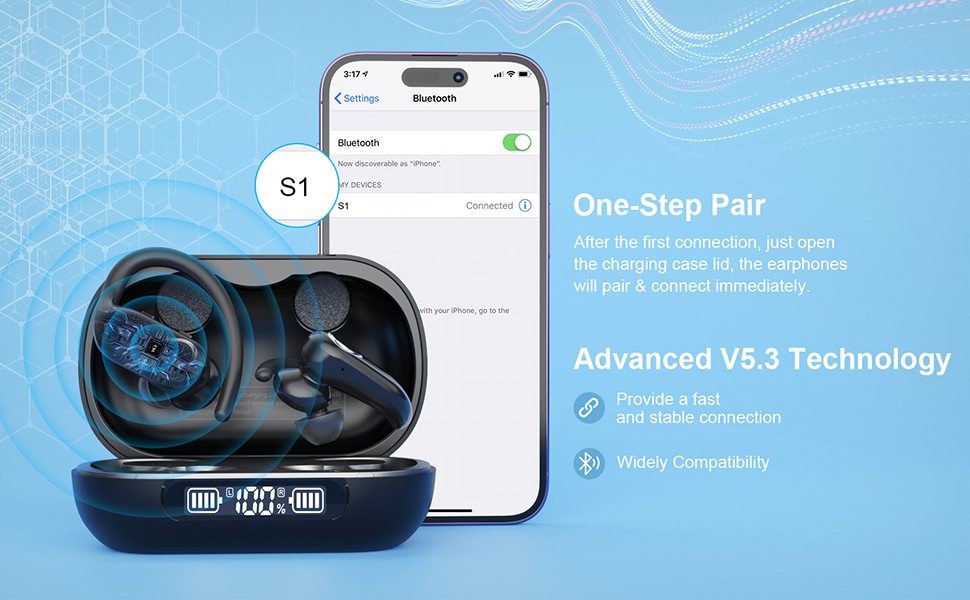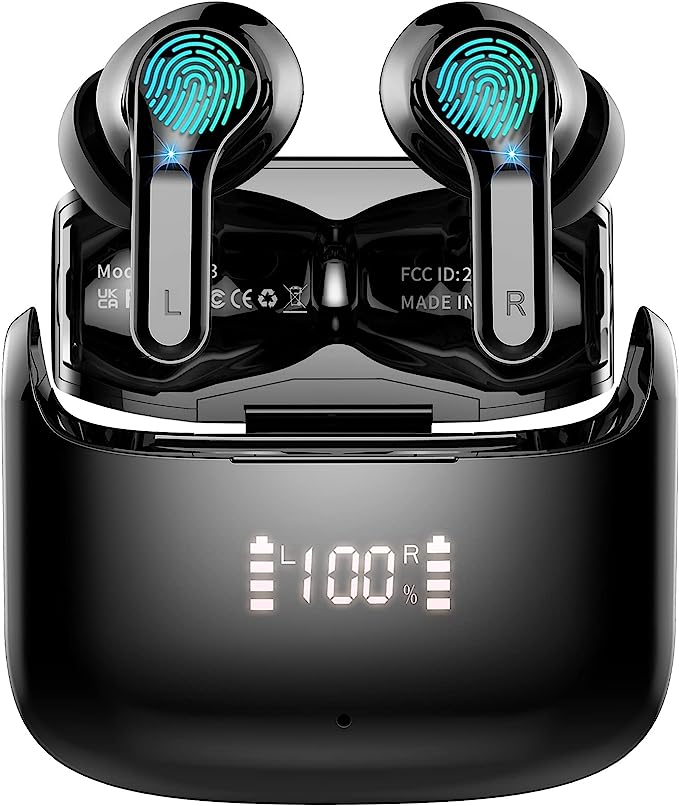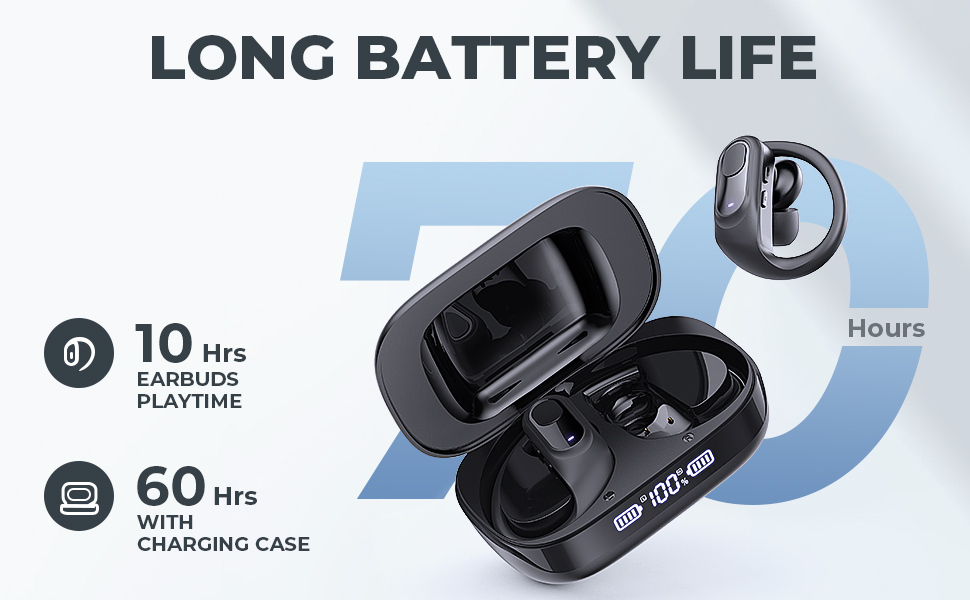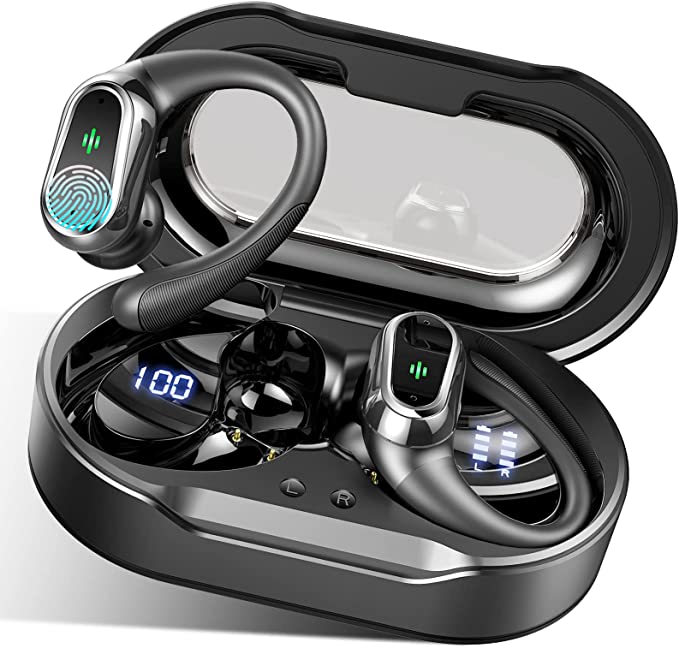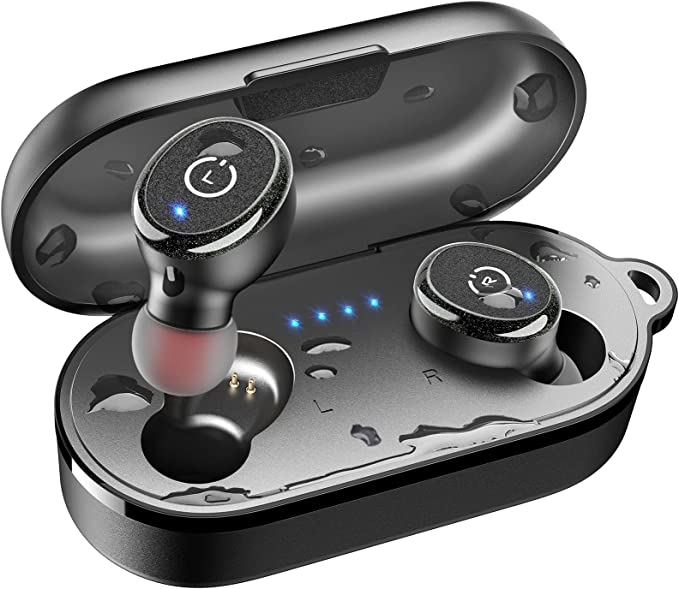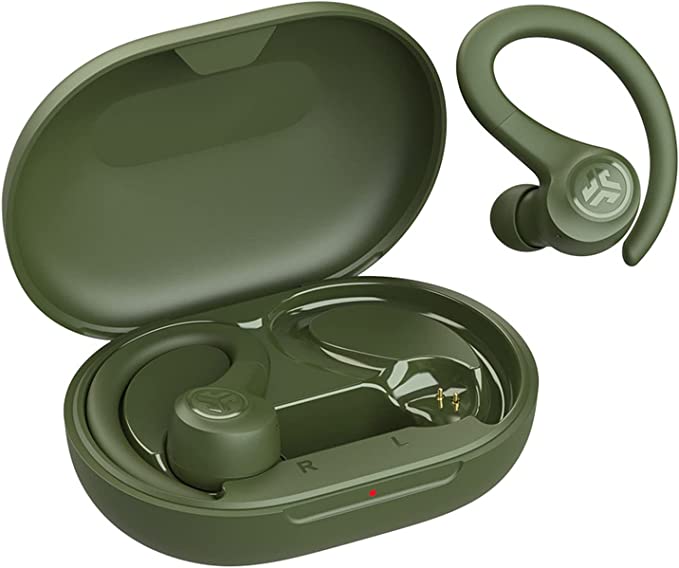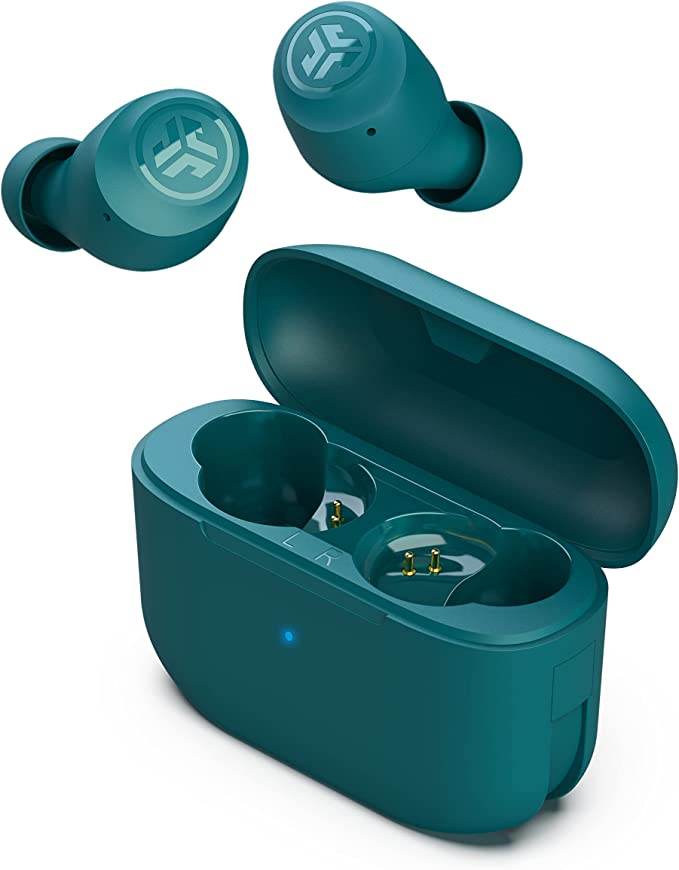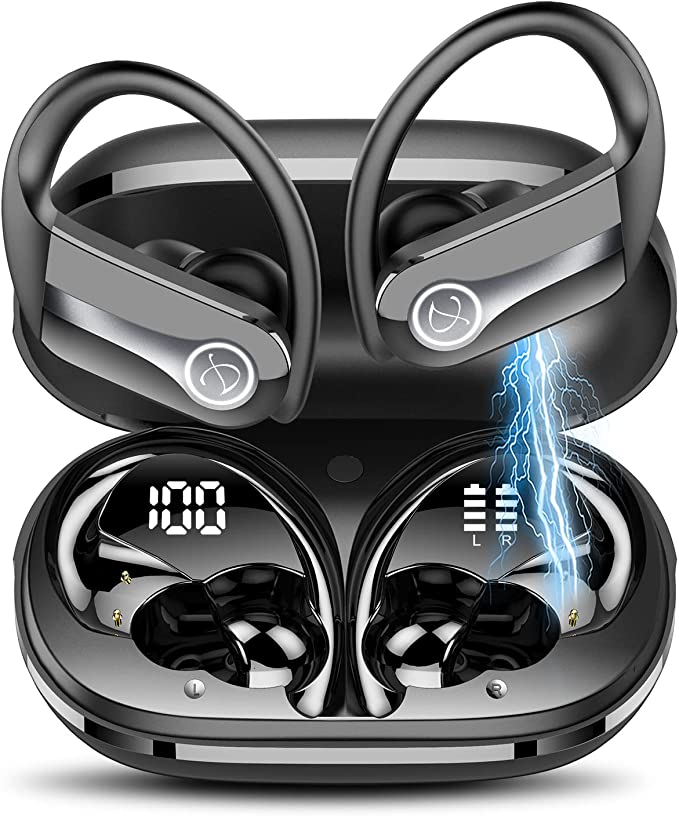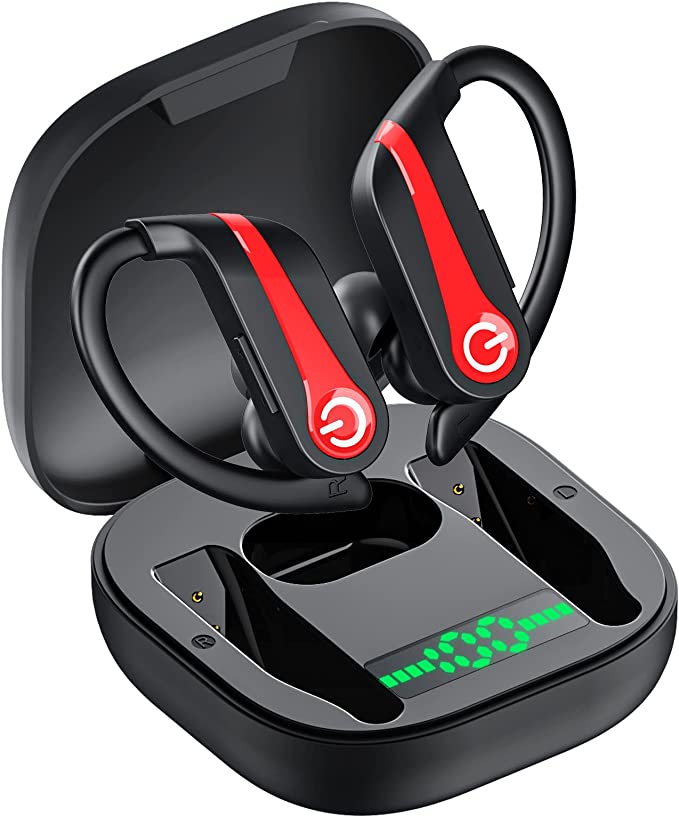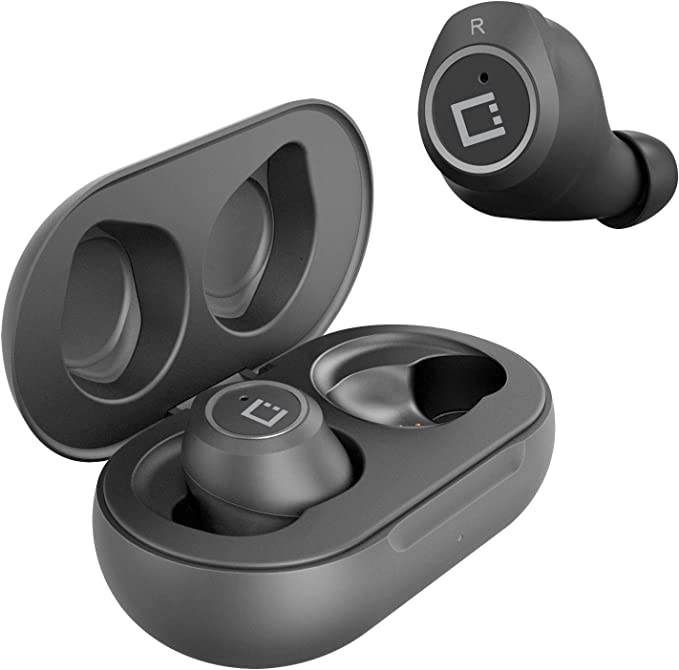Alpha Digital Q32 Earbuds: Unpacking the Science of Wireless Sound, From Bluetooth 5.0 to Your Eardrum
Update on June 24, 2025, 11:11 a.m.
It’s a peculiar kind of magic, isn’t it? The ability to conjure a rich, immersive soundscape, seemingly from thin air, tucked discreetly into your ears. Gone are the days of tangled wires tethering us to our devices. Today, tiny wireless earbuds, like the Alpha Digital Q32, promise us this auditory freedom. But have you ever paused mid-song, or mid-podcast, and wondered about the intricate ballet of technology unfolding within these diminutive devices? As someone who’s spent a couple of decades marveling at and dissecting consumer audio tech, I find the science packed into these everyday companions endlessly fascinating. So, let’s pull back the curtain on the Alpha Digital Q32 and explore the engineering and scientific principles that make your personal soundtrack possible.

Bluetooth 5.0: The Invisible Handshake That Sets Your Music Free
The very essence of “wireless” in your Q32 earbuds hinges on a technology most of us use daily yet perhaps don’t deeply ponder: Bluetooth. Think of Bluetooth as your own personal, short-range radio station, constantly broadcasting data between your phone (or other source device) and your earbuds. The Alpha Digital Q32 employs Bluetooth 5.0, a specific version of this standard, and that “5.0” isn’t just a number; it signifies tangible benefits for your listening experience.
The Bluetooth Special Interest Group (SIG), the organization that shepherds this technology, outlines that Bluetooth 5.0 offers significant advantages over its predecessors. For the Q32, this translates to the touted “faster, and fluent streaming transmission.” This isn’t merely about speed for speed’s sake. A key component here is EDR (Enhanced Data Rate), which allows more audio data to be sent in the same amount of time. Why does this matter to your ears? Richer, less compressed audio. When there’s more bandwidth, the audio signal doesn’t need to be squeezed as aggressively, preserving more of the original nuance and detail in your “stereo music Format.”
Then there’s the “longer distance” capability – the Q32 product page mentions “10 meters with no obstacles.” Bluetooth 5.0, in ideal conditions, can indeed cover greater distances with more stability than older versions. This means fewer dropouts if you wander away from your phone momentarily. And critically for such small devices, Bluetooth 5.0 is designed for “lower power consumption.” This efficiency is paramount for those 50mAh batteries in each Q32 earbud, helping to stretch out the listening time before they need a visit back to their charging case.
The “Auto Pairing” feature further exemplifies the sophistication. The moment you pluck the Q32s from their case, they power on and initiate a digital handshake, first with each other (this is part of what “True Wireless Stereo” or TWS means – each earbud independently connects to the source) and then with your phone, remembering previously paired devices. It’s a complex sequence of protocols, including the vital A2DP (Advanced Audio Distribution Profile) which is the standard for streaming high-quality stereo audio over Bluetooth, all happening almost instantaneously to give you that seamless “just works” experience.

The Heart of the Beat: How Dynamic Drivers Create Your Personal Concert Hall
So, the music data has arrived wirelessly. Now, how do these tiny Q32 earbuds transform those digital ones and zeros back into the sound waves that delight our eardrums? This is where the fascinating world of acoustics and electro-mechanics comes into play, starting with a component often unmentioned in everyday conversation: the DAC (Digital-to-Analog Converter). Every digital audio device needs one. It’s the crucial bridge that translates the language of computers (digital signals) into the language our ears and speaker drivers understand (analog electrical signals).
Once converted, this analog signal journeys to what the Q32 product description calls its “latest moving-coil Horn loudspeaker with bigger dynamic driver,” specifically an φ8MM unit. This dynamic driver is essentially a miniature version of the classic loudspeakers you might have in your living room. Imagine an intricate dance: the audio signal, now an electrical current, flows through a “voice coil” (a finely wound coil of wire). This coil is attached to a “diaphragm” (a thin, flexible membrane) and is suspended within a permanent magnetic field. As the electrical current representing your music fluctuates, it creates a varying magnetic force, causing the voice coil and the attached diaphragm to vibrate rapidly back and forth. These vibrations push and pull the air, creating pressure waves – and voila, sound!
The mention of a “bigger dynamic driver” is significant. In physics, all else being equal, a larger diaphragm has the potential to move a larger volume of air. This is particularly beneficial for reproducing lower frequencies – the bass and sub-bass that give music its warmth and punch. It’s part of how the Q32 aims for “a Truly Natural, Authentic Sound and Powerful Bass Performance.” The goal, as stated, is “getting a clear mid-range and a balanced bass and treble performance.” This “balance” is key to what many perceive as “Hi-Fi sound quality” or “HD Stereo Sound.” It’s not about artificially boosting one frequency range but ensuring that all parts of the audio spectrum – from the deepest rumbles to the highest shimmers – are presented clearly and cohesively, allowing you to hear the music as the artist intended.
Of course, your perception of this sound is also shaped by how well the earbuds isolate you from the outside world. This is where passive noise isolation comes in. The Q32 comes with three sizes of silicone ear caps (S, M, L). Finding the right fit is paramount. A snug, comfortable seal does two critical things: it physically blocks a significant amount of ambient noise from entering your ear canal, much like cupping your hands over your ears, and it creates a closed acoustic chamber. This chamber is essential for the dynamic driver to deliver its full bass potential; if the seal is poor, those lovely low frequencies can “leak” out, leaving the sound thin and tinny.

Powering Your Playlist: The Science of Sustained Performance
All this intricate technology requires energy, and in the untethered world of wireless earbuds, that energy has to be self-contained. Each Q32 earbud is equipped with a 50mAh (milliampere-hour) battery. Now, mAh is a unit of electric charge, essentially telling you how much current a battery can provide for a certain amount of time. Think of it as the “size of the fuel tank.” For such compact devices, 50mAh per earbud is a common capacity, and the choice of battery chemistry is crucial. Most modern earbuds, likely including the Q32, use Lithium-Polymer (Li-Po) batteries. These are favored over older chemistries like Nickel-Cadmium or even traditional Lithium-ion cylindrical cells because Li-Po batteries can be made very thin, are lightweight, and can be shaped to fit into tight, irregular spaces – perfect for an earbud’s contoured design. They also generally offer good energy density, meaning they pack a decent amount of power for their size and weight.
However, a 50mAh battery on its own wouldn’t give you days of listening. That’s where the “Storage case for Charging” becomes the unsung hero. The Q32’s case boasts a much larger 1500mAh battery. This case acts as a mobile power station or, as I like to think of it, a “mothership” for the earbuds. When you pop the earbuds back into the case, they automatically begin to recharge from the case’s internal battery. The Q32’s specifications suggest the case can “recharge the earbuds 9-10 times,” which is how they arrive at the impressive “20 Hours Play time” figure. This is a combined total – the playtime of the earbuds on a single charge, plus the additional charges provided by a fully topped-up case.
Interestingly, the Q32’s charging case also “can act as a power bank for charging mobile phones and other USB devices.” With 1500mAh, it won’t fully recharge a modern smartphone, which typically has a battery capacity of 3000-5000mAh, but it could provide a welcome emergency boost in a pinch. This versatility is a neat piece of added value, showcasing efficient use of the case’s stored energy.

Ergonomics and Interaction: Technology Tailored to You
Beyond the internal electronics, the physical design – the ergonomics – of an earbud like the Q32 plays a massive role in your overall experience. The product description highlights a “Comfortable to wear” philosophy, with a “soft earplug gel and curved design based on the shape of the human ear.” This isn’t just marketing fluff; it touches on the science of human anatomy and biomechanics. Human ears are incredibly varied in size and shape. The “curved design” attempts to follow the general contours of the concha (the outer bowl of the ear), while the provision of three ear cap sizes (S, M, L) acknowledges that the ear canal itself also varies significantly from person to person. As we discussed earlier, achieving a good seal is vital not just for comfort and stability (preventing them from falling out) but also for optimal acoustic performance and passive noise isolation. The “soft earplug gel,” likely a medical-grade silicone, is chosen for its hypoallergenic properties, flexibility, and ability to conform to the ear canal’s shape.

The “Sweat-Proof Design” is another practical consideration, especially if you plan to use your Q32 earbuds during workouts or in humid conditions. While “sweat-proof” isn’t a formally standardized IP (Ingress Protection) rating like IPX4 or IPX7 (which quantify levels of water and dust resistance), it implies that the earbuds have some measures in place to resist damage from moisture. This could involve nano-coatings on internal components, tighter seals around seams and buttons, or specific material choices that are less susceptible to corrosion. For anyone leading an active lifestyle, this feature is crucial for the longevity of the device.
Interacting with your audio and calls without constantly fumbling for your phone is another key aspect of the wireless earbud experience. The Q32 features an “on-ear button on each side” enabling “One Button Control.” This design philosophy aims for simplicity. A single multifunction button on each earbud can typically handle play/pause, skipping tracks (often via double or triple presses), answering/ending calls, and sometimes even activating your phone’s voice assistant (like Siri or Google Assistant) with a long press. The challenge for designers is to make these multi-press gestures intuitive and reliable without making the button itself too sensitive or too hard to press.
For phone calls, the “BINAURAL CALL-IN” feature, with “built-in microphones in both earbuds,” is a significant step up from older single-earpiece Bluetooth headsets. Having microphones in both earbuds allows for a more natural call experience. More advanced systems can even use the input from both microphones to implement basic forms of noise reduction for the outgoing voice signal – by comparing the sound arriving at each mic, the system can attempt to differentiate your voice (which should be similarly loud in both) from ambient noise (which might be louder in one mic than the other, or have different characteristics). This helps to ensure your voice is transmitted more clearly to the person on the other end of the call, even if you’re in a moderately noisy environment.
Beyond the Specs: Compatibility and the Listener’s Experience
The promise of being “Compatible with all Bluetooth devices” is a broad one, but largely true thanks to the ubiquity and standardization of Bluetooth technology. Whether you’re using an “iPhone Series, iPod Series, Blackberry, HTC, Microsoft Series,” or a “Bluetooth-enable tablet,” the Q32 should, in principle, connect and stream audio. This cross-platform compatibility is one of Bluetooth’s greatest strengths.
It’s also worth acknowledging the real-world experiences captured by user ratings. The Alpha Digital Store page shows the Q32 with “3.8 out of 5 stars” from “47 ratings.” While a small sample size, such feedback often highlights common themes in consumer electronics. For instance, some users might find the fit perfect (“They fit the ear”), while others with very small ear canals report issues (“much too big…kept falling out”), underscoring the challenge of designing a “one-size-fits-most” ergonomic solution. Similarly, while many might praise the sound or battery life, others might encounter issues with charging or specific earbud malfunctions (“Left Earbud Doesn’t Stay Charged”). This isn’t unique to the Q32 but reflects the manufacturing tolerances and varied usage conditions inherent in mass-produced electronics. It reminds us that individual experiences can differ, and what works wonderfully for one person might be less ideal for another.

The Takeaway: Appreciating the Invisible Engineering in Your Pocket
The Alpha Digital Q32 Wireless Earbuds, like so many of their contemporaries, are a compelling example of how complex scientific and engineering principles are distilled into accessible, everyday technology. From the intricate radio frequency management of Bluetooth 5.0 ensuring a stable connection, to the electro-acoustic marvel of dynamic drivers converting electrical signals into rich sound, and the careful power management that squeezes hours of playtime from tiny batteries – every feature is a testament to human ingenuity.
Understanding a little of the science behind these gadgets doesn’t diminish their magic; I believe it enhances our appreciation for them. It allows us to move beyond marketing slogans and understand the tangible benefits – and sometimes limitations – of the technology we integrate so seamlessly into our lives. As audio technology continues its relentless march forward, with advancements like LE Audio promising even better quality and lower power consumption on the horizon, one thing is certain: the quest to deliver a perfect, personal, and untethered sound experience will continue to drive innovation. And for those of us who love to listen, that’s a truly exciting prospect.
